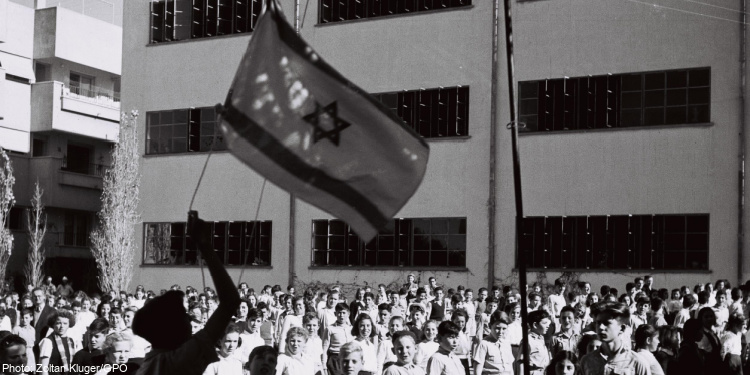Flags of Fellowshipنموونە


An Anthem of Hope
If the flag was the visual symbol of rebirth, Hatikvahwas its soundtrack.
“Our hope is not yet lost,
The hope of two thousand years,
To be a free people in our land,
The land of Zion and Jerusalem.”
Hope had carried the Jewish people through exile, persecution, and even the Holocaust. As Holocaust survivor, author, and advocate Elie Wiesel wrote, “Just as a man cannot live without dreams, he cannot live without hope.” This hope was not vague optimism, but rooted in God’s promises through the prophets. As the prophet Jeremiah said in Lamentations:
“Yet this I call to mind and therefore I have hope:
Because of the Lord’s great love we are not consumed,
for his compassions never fail.” (3:21–22)
Every time the anthem is sung and the flag is raised, Israel remembers: hope was never lost. It was hope in God’s faithfulness that sustained generations and that continues to sustain His people today.
کتێبی پیرۆز
دەربارەی ئەم پلانە

Since Bible times, flags have been raised by God’s Chosen People in remembrance, solidarity, and hope. Tracing the story of the banners of Israel from the wilderness tribes to the angels at Sinai, from the rebirth of Israel in 1948 to the anthem of Hatikvah, learn how flags embody both identity and God’s promises. As we fly Flags of Fellowship today—each one honoring lives lost and declaring faith in God’s covenant—we proclaim together that His hope endures, His people are not forgotten, and His promises stand forever.
More
پلانە پەیوەستەکان

Be Good to Your Body

The Heart Work

I Am Unhappy: Finding Joy When My Heart Is Heavy

LIVING LETTERS: Showing JESUS Through Your Life

Refresh Your Soul - Whole Bible in 2 Years (5 of 8)

Christian Forgiveness

A Spirit-Filled Moment: Encountering the Presence of God

Biblical Marriage

Refresh Your Soul - Whole Bible in 2 Years (6 of 8)
